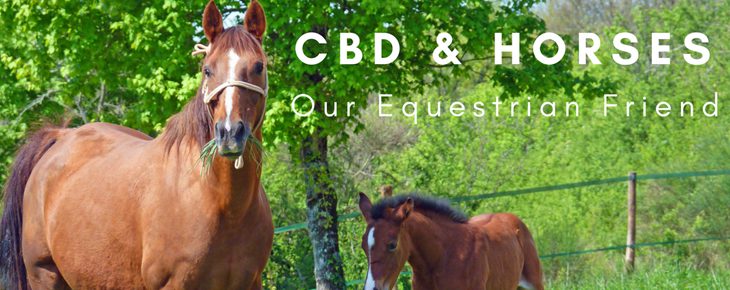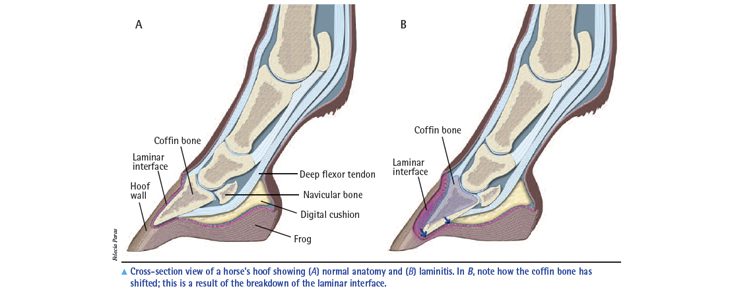What are Cannabinoids?
Cannabinoids are chemical compounds that are found in cannabis and hemp. They match and map to endocannabinoids in the ECS (Endocannabinoid System) found in all mammals. These systems are not identical across each species, but they do function in much the same way.
Phytocannabinoids trigger an entire inventory of medical therapeutic applications. THC is the best known of all of these elements, but it’s the one that produces the psychoactive effects that placed it on the FDA’s Schedule 1 of drugs. Hemp, on the other hand, has less than .3% THC, and more importantly, Hemp-extracted CBD-oil is legal in all 50 states.
The ECS is common to mammals. It involves their brains, nervous systems, organs and immune systems in many extensive and complex ways. The prescription medications used to treat medical conditions must be processed by the horse’s physiology, but cannabinoids and phytocannabinoids are simply assimilated.
Cannabinoids and their effects on animals:
An extremely extensive study done in 1999 about Cannabinoids and Animal Physiology concluded with the following highlights:
“Cannabinoids likely have a natural role in pain modulation, control of movement, and memory.
The natural role of cannabinoids in immune systems is likely multi-faceted and remains unclear.
The brain develops tolerance to cannabinoids.
Animal research has demonstrated the potential for dependence, but this potential is observed under a narrower range of conditions than with benzodiazepines, opiates, cocaine, or nicotine.
Withdrawal symptoms can be observed in animals but appear mild compared with those of withdrawal from opiates or benzodiazepines, such as diazepam (Valium).”
The research has been focused on the reaction of lab animals, but there are fundamental commonalities in the physiology of lab animals, domestic pets and livestock.
Cannabinoids and their effects on horses:
Horses constantly live in a state of “fight or flight.” They have instinctive fears of falling or tripping. Having no ability to see behind them, they worry about what’s going on behind them… and if you have been around horses enough, you realize they really would prefer to run wild.
In addition to their anxiety and stress, horses are subject to a large amount of medical problems: arthritis, herd bound issues, muscle soreness, chronic laminitis, stall rest, trailering stress and much more.
Equine Arthritis: Aging horses develop Degenerative Joint Disease (DID) along with Traumatic Joint Disease – that appears as pain, swollen joints, and stiffness.
Chronic Laminitis: According to the American Association of Equine Practitioners -Laminitis results from the disruption of blood flow to the sensitive and insensitive laminae. These laminae structures within the foot secure the coffin bone to the hoof wall. Inflammation often permanently weakens the laminae and interferes with the wall-bone bond. In very severe cases, the hoof wall and bone can separate. Among other causes, laminitis relates to aging, digestive issues, and severe colic.
Herd Bound Issues: Horses are prey animals that find comfort in membership in a herd with other horses. They are social in their fear, so they suffer anxiety when separated from the horse social circle.
Muscle Soreness: Horses suffer muscle pain and strain, especially after exercise. It is usually relieved with physiotherapy and rest. Riders and owners are often unaware of the pain horses feel around the saddle area and in their legs following an active ride.
Stall Rest: Equiresearch explains, “Weeks of cooped-up idleness can make your horse aggressive, anxious, or dull, and can even interfere with his healing unless you anticipate and counteract the effects of confinement.”
Trailering Stress: Horses, for the most part, are claustrophobic. As a prey animal, they instinctively prefer wide open spaces. Tight, mobile areas stress them because they restrict an escape route and even the room to turn around. In addition to that, horses have long memories of uncomfortable and unstable rides from their past.
CBD (cannabidiol) has proven beneficial effects for all these conditions and more. In horses and other mammals, CBD-rich extracts can help to treat:
- Anxiety
- Inflammation
- Chronic Pain
- Separation Anxiety/ Generalized Anxiety
- Digestion and Appetite
- Arthritis
- Nausea
- Seizures
The values in CBD Oil:
CBD is the non-psychoactive compound found in the cannabis sativa plant and hemp. CBD oil is an extract that does NOT include the psychoactive THC. Equine researchers and veterinarians have become very interested in the health benefits following the administration of full-spectrum CBD oil.
Full-spectrum CBD oil for horses will act as an analgesic, anti-inflammatory, anti-anxiolytic, anticonvulsant antiemetic, and anti-tumoral therapy. It produces no negative side effects and it can be administered orally.
Due to its strictly natural origin and production, the FEI and U.S. Equestrian Federation (USEF) do not list it as a prohibited supplement in competition rules (although you may want to double check the regulations at your local competition).
At its core, CBD oil treats a broad spectrum of anxiety related issues in horses, thoroughbreds, quarter horses and also pets.




